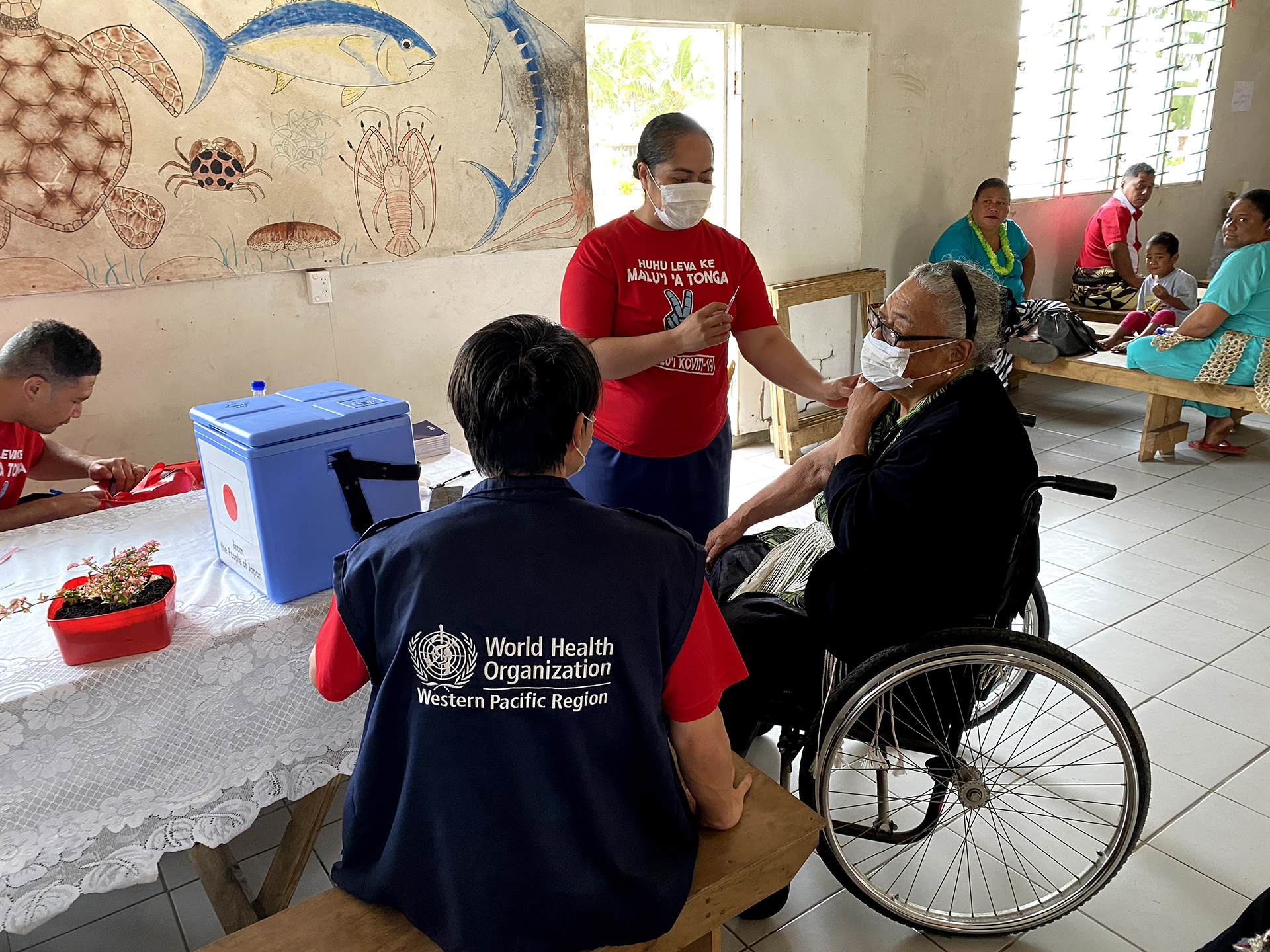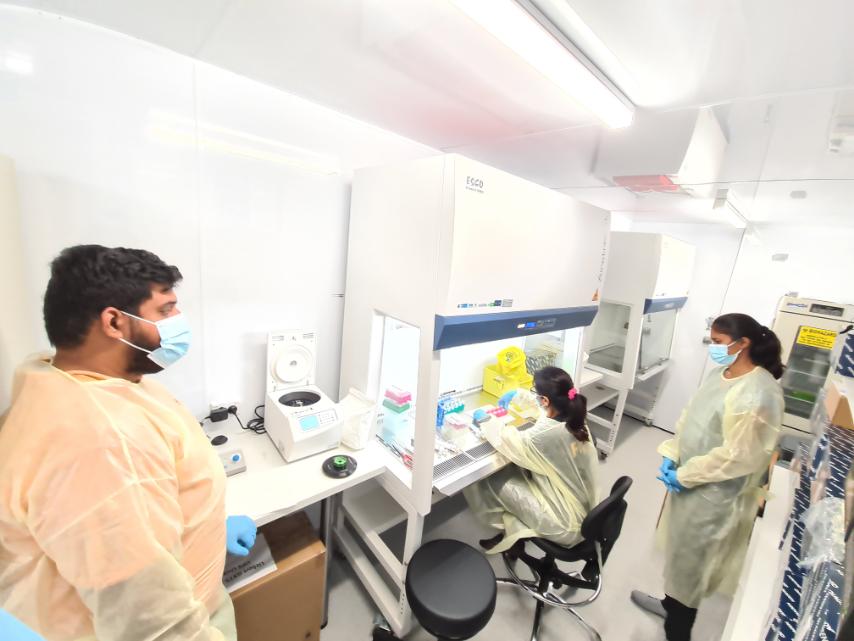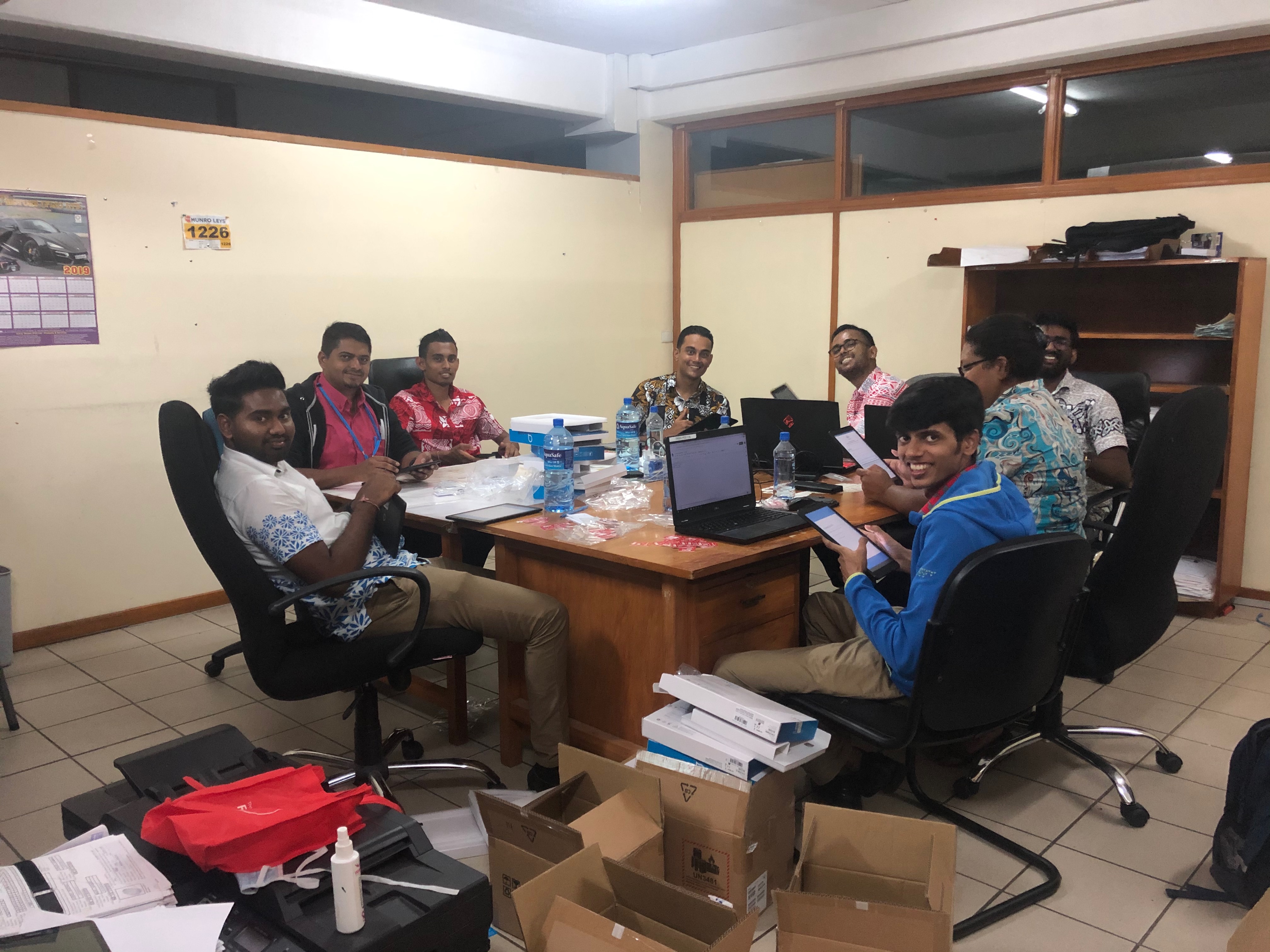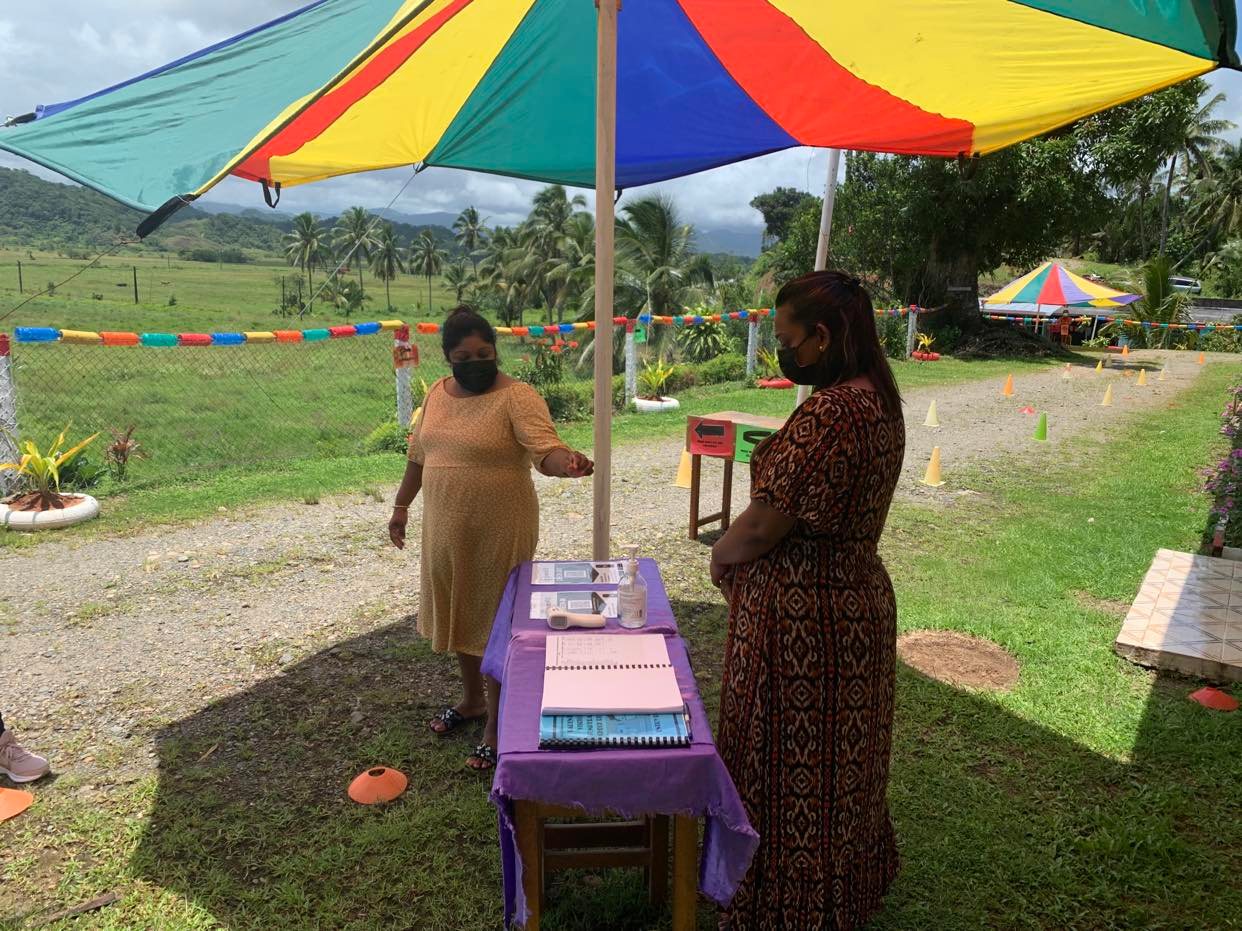In 2021, the World Health Organization (WHO) continued to support Member States in the Pacific as they faced another year of the COVID-19 pandemic. Working together with partners, WHO provided technical support and built priority health capacities across the Pacific which is not only helping countries to respond to the pandemic but will also save lives and deliver better health long after the pandemic is over. Here are some of the highlights of WHO’s support in the Pacific in 2021.
Supporting the roll out of COVID-19 vaccines

The development and rollout of COVID-19 vaccines proved to be a gamechanger in preventing people from dying or becoming seriously ill from COVID-19. Through COVAX, led by Gavi, the Coalition for Epidemic Preparedness Innovations (CEPI) and WHO, alongside key delivery partner UNICEF, 1.2 million vaccine doses were delivered across the Pacific. WHO, UNICEF and COVAX partners have led the regional coordination of the roll out of COVID-19 vaccines in the Pacific, supported regulatory authorization, helped in the development of national vaccination plans, provided training to health workers, and shared technical guidance and tools. With vaccines in hand, health workers across the Pacific set out to ensure that people were vaccinated against COVID-19, whether by boat, by plane or on foot, to reach remote mountain villages and far-flung outer islands. As result, by the end of 2021, many Pacific island countries and areas (PICs) had vaccination rates that would be the envy of many other countries around the world – ten had successfully double-vaccinated more than 80% of their eligible populations. And crucial to this success has been the support of partners including the Governments of Australia, Japan, New Zealand, and US, either through COVAX or through bilateral donation of vaccines.
Strengthening laboratories for disease detection

The pandemic highlighted the urgent need for PICs to be able to access diagnostic testing to detect COVID-19. By the end of 2021, WHO had delivered more than US$11 million in laboratory equipment and supplies across the Pacific and every PIC was able to carry out polymerase chain reaction (PCR) testing in country. WHO also provided technical guidance and protocols on COVID-19 testing, training health workers on the application of the guidance and implementation of various testing platforms. Not only will this capacity continue to pay off during the pandemic, but it can be used to test for many other known diseases, such as for measles, tuberculosis, influenza and dengue, as well as emerging diseases.
Increasing investment in mental health

The COVID-19 pandemic has been stressful for everyone around the world, and it was no different in the Pacific. Many people have faced events which have taken a toll on their mental health such as the loss of a loved one, loss of their job or livelihood, isolation and separation. To support people during this difficult time and meet the increased demand for mental health services, ministries of health in Pacific island countries and areas have been increasing their investment in mental health, with support from WHO.
The focus has been to make sure that mental health services are available closer to communities through training health workers on basic psychosocial skills and the identification and management of mental health conditions at the primary care level, including on the Mental Health Gap Action Programme (mhGAP). WHO also supported Member States in increasing awareness of mental health among frontline workers and communities through communication materials tailored to the Pacific context.
Accelerating digital health

COVID-19 has accelerated investments in digital health as several countries introduced innovative digital tools to respond to COVID-19 and ensure continuous access to health services. This has included telehealth initiatives, outbreak data management, contact tracing applications, electronic immunization registries, and remote monitoring for chronic conditions. WHO supported Pacific island countries and areas to assess their digital health capacities through the Digital Health Profile and Maturity Assessment Toolkit (DHPMAT), a toolkit developed by WHO and the WHO Collaborating Centre on eHealth University of New South Wales Sydney School of Population Health. WHO further supported digital health capacity by providing access and training to digital tools useful for the pandemic response. One tool that was piloted in some Pacific island countries was Go.Data, outbreak data management software that helps coordinate activities during outbreaks such as case tracking and contact tracing. There are further plans to use the same outbreak management system to manage other outbreaks. WHO also worked with some Pacific island countries to design and roll out a digital system to track vaccine delivery.
Communicating and engaging communities on COVID-19

Risk communication and community engagement (RCCE) are critical tools empowering people and communities to protect themselves during the pandemic or other health emergencies. In 2021, WHO supported Member States to communicate the risks related to COVID-19, engage communities in pandemic preparedness and response and to build support for COVID-19 vaccination. WHO worked closely with Ministries of Health across the Pacific to set up social listening systems to understand what communities are thinking, feeling and doing related to COVID-19, to adjust response measures based on community needs, and to be able to respond, where necessary, to circulating rumours and misinformation. WHO also supported countries to share information through social media, traditional media, and mobile community engagement teams.
A large part of the RCCE work in 2021 focused on encouraging people to be vaccinated against COVID-19 – this was especially important in COVID-free Pacific island countries where the public’s risk perception was low. WHO and Ministries of Health worked with civil society partners, faith-based organizations and international organizations to coordinate these efforts, sharing key messages on COVID-19 vaccines, answering people’s questions, responding to concerns and engaging communities online and offline.
Continued support for Pacific island countries in 2022
This year, WHO will continue to work alongside Ministries of Health in COVID-19 preparedness and response as well as addressing some of the urgent health issues across the Pacific such as noncommunicable diseases and climate change and environmental health. Some of the work will focus on strengthening policies and legislation, while some will focus on introducing new innovations – all aligned with WHO Western Pacific’s For the Future vision. The technical support and coordination will carry on this year, with the aim of strengthening health systems and health security to be ready for COVID-19 and other potential outbreaks and emergencies.
WHO’s work in the Pacific is made possible by the generosity of our donors and partners. We would like to thank the European Union and the Governments of Australia, Japan, New Zealand, Republic of Korea, and the United Kingdom for their funding contribution to WHO.
